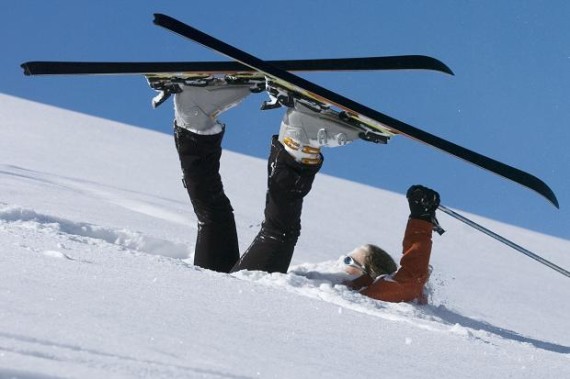Skiing Injuries
By Philip Parr
It is that time of year again……when all the lucky people head away on their skiing holidays, having a blast on the slopes but then come home carrying a bit of a niggling injury or even something a tad more serious. In recent weeks we have definitely seen an increase in skiing related injuries. Have a read of some of the common injuries we’ve been treating recently:
1. Acromio-clavicular joint injuries (AC joint)
This relates to the ‘nobbly’ bit on top of your shoulder joint. The injury usually occurs following a fall directly onto the shoulder or falling onto an outstretched arm. It is rotten luck if this occurs on your holidays but very important that you get it checked out whilst you are away. Pain and swelling in the area will be experienced and sometimes an abnormality on the bone can be felt or seen. This can be a very serious injury and medical attention should be sought immediately. The arm must be kept immobilised straight away with a sling ideally, to protect the joint from further injury and provide support. Consultation with your GP and/or Physiotherapist on your return home will allow for the rehabilitation process to begin.
2. Knee Ligament Injuries
Knee ligament injuries are a common occurrence on skiing holidays. Landing jumps, colliding with fellow skiiers, crossing ski’s, widening stance or something as simple as a fall can result in a sharp twisting motion causing potential ligament damage. Pain and swelling around the joint can indicate this injury although different levels/grades of the injury will determine how long you will be out of action for. Minor knee ligament injuries can settle with no need for intervention whereas other more serious knee inuries can result in longer lay-off’s and require rehabilitation. Apply the principles of PRICE in the initial stages but if symptoms aren’t improving be sure to consult your GP or Physiotherapist for further assessment and advice.
Prevention
Many factors contribute to an individual’s potential for injury. Going away on a skiing trip should not be taken lightly and will place various physical demands on your body. Therefore the fitter and stronger you are, the more you will get from the skiing experience and the less likely you are to get injured. On top of general improved cardiovascular fitness, we at Blackstone would recommend some more specific functional and strengthening exercises:
a) Squatting
Squatting is primarily a ‘leg exercise’ with the hamstrings, quads, glutes and groin being the prime movers. However this exercise will also have you working your abs, obliques and lower back muscles.
b) Lunges
The lunge is a great movement for developing the thighs and strengthening the hips. Lunges target two primary muscles groups: the hip extensors (comprising the gluteal muscles (glutes) and hamstrings) and the knee extensors (quads).
The muscles used in the lunge are the same as those utilised in the squat, but the lunge provides greater range of motion, allowing more substantial glute and hamstring development.
Lessons
Lessons to appreciate and improve upon your skiing ability are a wise idea and will hopefully avoid any complacency on the slopes. Additionally, good equipment that is properly fitted and maintained by a certified ski shop will minimise risks. Skiers who understand the risks and attempt to control as many variables as possible can avoid many serious injuries.
This is a very brief summary of some skiing injuries that we have seen in the clinic recently. If you have any questions or queries with regards any of the above information please do not hesitate to contact us on 028 92611211. Alternatively e-mail Phil: phil@blackstonephysio.co.uk.
HAVE FUN AND STAY SAFE ON THE SLOPES

